June 6 1944: D-Day. The start of the Allied Invasion of France.
The beginning of the end in 39 Photos.
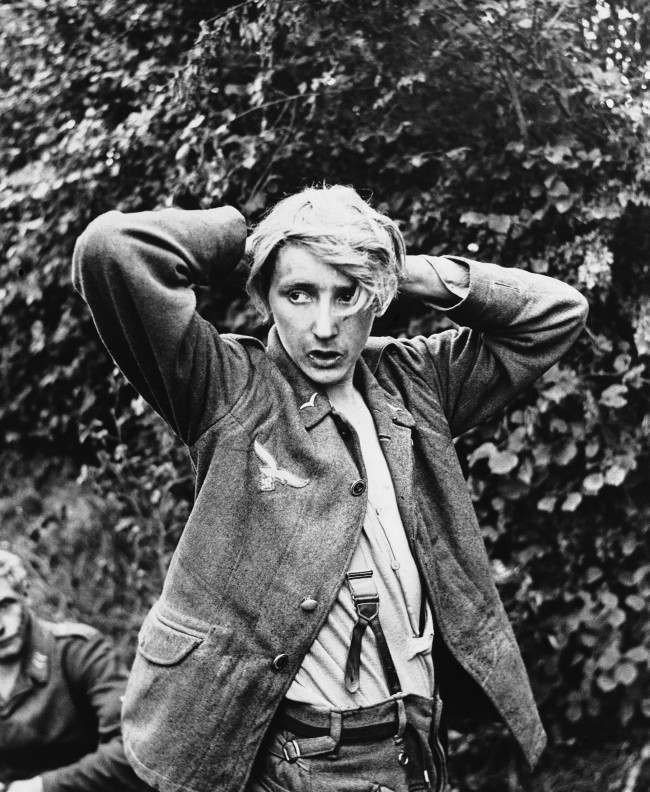
Without a shirt and with underwear and coat unbuttoned, a young German soldier captured by Allied forces at St. George D’elle in Normandy looks furtively around on March 28, 1944. (AP Photo)

Two American soldiers rest against a chalk cliff on the beach of the Normandy coast of France after landing in June,1944. Man at right is wrapped in blanket and soldier at left stretches out beside an inflatable belt he apparently wore while making his way ashore. (AP Photo)
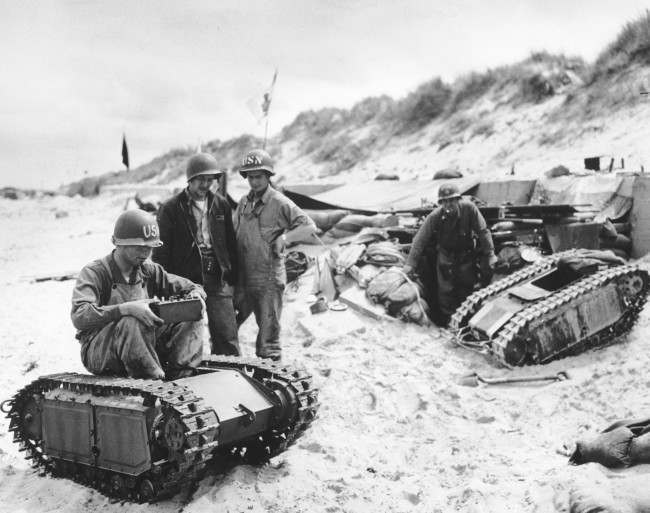
U.S. Navy men take apart a German “Beetle”, a miniature tank loaded with explosives, during the Allied Normandy landings in France, in June 1944. (AP Photo)

A wounded German soldier who surrendered to the Allied invasion forces, stands surrounded by a crowd of civilians and a French gendarme on the left, in Barneville in the Normandy region, June 1944. (AP Photo)

A 16-year old German soldier has his hands clasped over his head as he is taken prisoner with thousands of other Wehrmacht soldiers, at Cherbourg, France, during the Allied Normandy invasion in June 1944. (AP Photo)
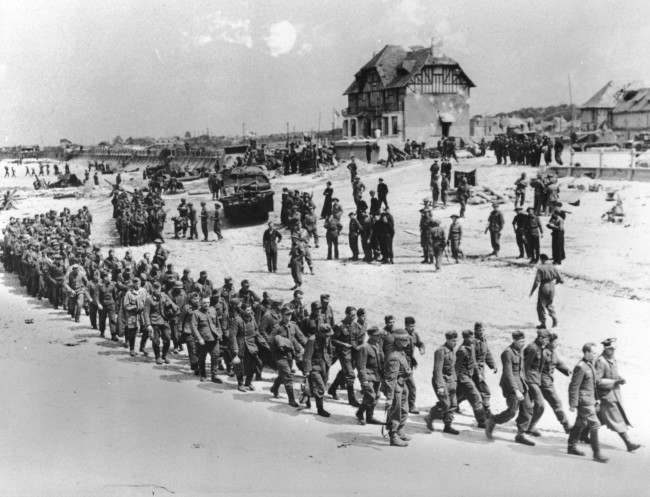
German prisoners of war, captured during the Allied Normandy invasion, are marched to the ships that bring them into captivity in England, in June 1944, at Bernieres-sur-mer, France. (AP Photo)

With his hair matted, and a weary but determined look in his face, this American soldier has his hand bandaged by a fellow medical officer, after he was wounded in battle in the early days of the Allied invasion of Normandy, France, in June 1944. (AP Photo)
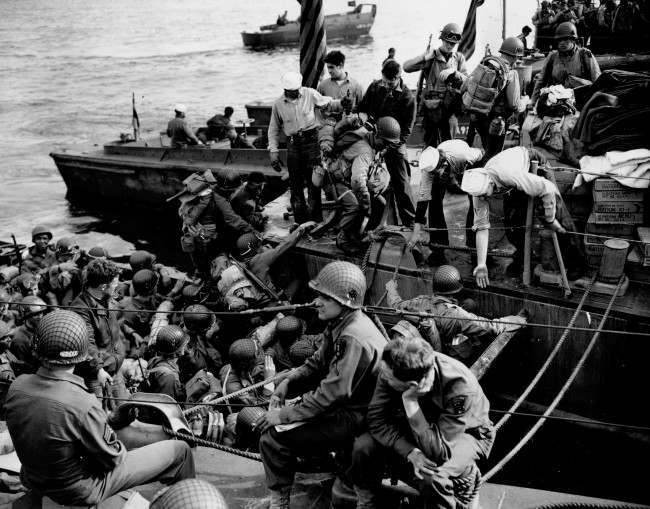
Men and supplies are being ferried out to landing crafts enroute for the initial Allied invasion of the Normandy, June 6, 1944. (AP Photo/Peter Carroll)

Carrying full equipment, American assault troops move onto a beachhead code-named Omaha Beach, on the northern coast of France on June 6, 1944, during the Allied invasion of the Normandy coast. (AP Photo)
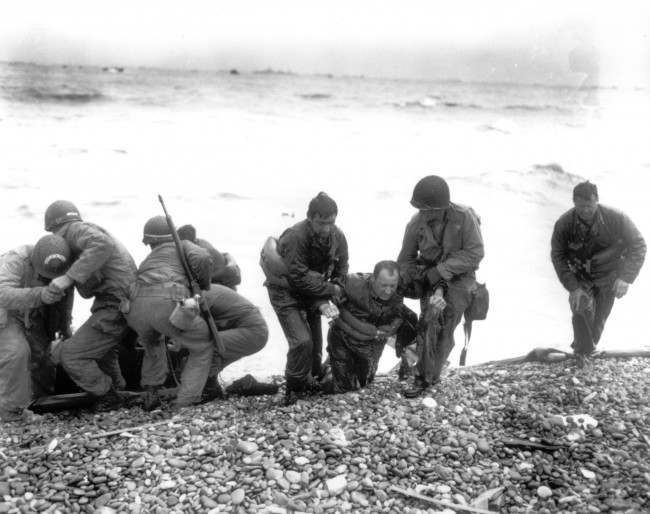
Members of an American landing unit help their exhausted comrades ashore during the Normandy invasion, June 6, 1944. The men reached the zone code-named Utah Beach, near Sainte Mere Eglise, on a life raft after their landing craft was hit and sunk by German coastal defenses. (AP Photo)

Men of the American assault troops of the 16th Infantry Regiment, injured while storming a coastal area code-named Omaha Beach during the Allied invasion of the Normandy, wait by the chalk cliffs at Collville-sur-Mer for evacuation to a field hospital for further treatment, June 6, 1944. (AP Photo)
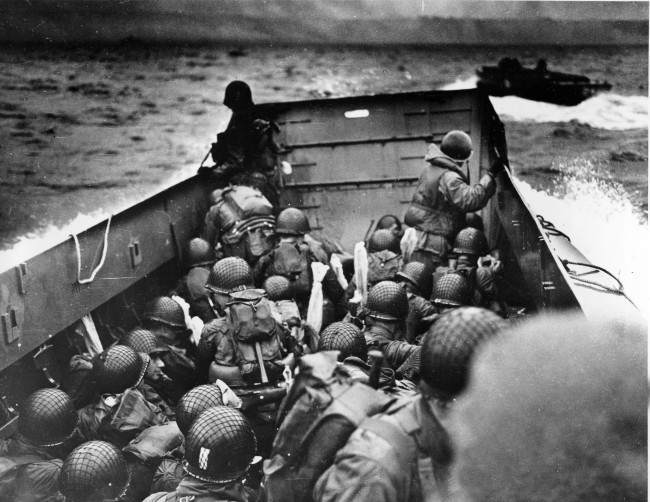
A U.S. Coast Guard landing barge, tightly packed with helmeted soldiers, approaches the shore at Normandy, France, during initial Allied landing operations, June 6, 1944. These barges ride back and forth across the English Channel, bringing wave after wave of reinforcement troops to the Allied beachheads. (AP Photo)
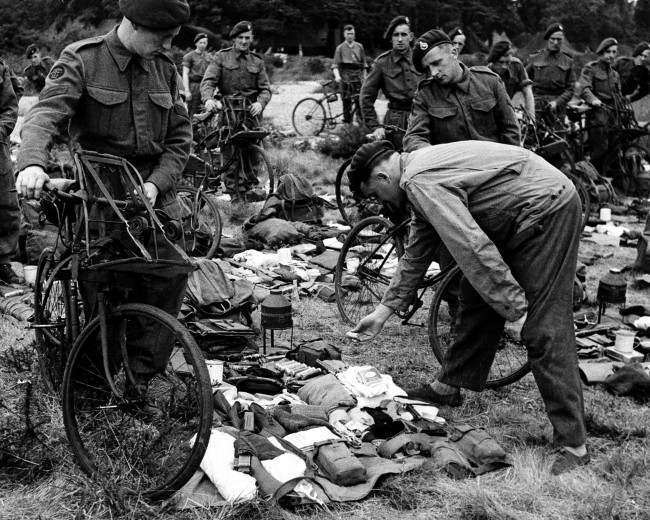
Members of a British special service commando are having their kits checked before leaving for the Allied landing operations of the Normandy coast in France, on June 6, 1944. (AP Photo)
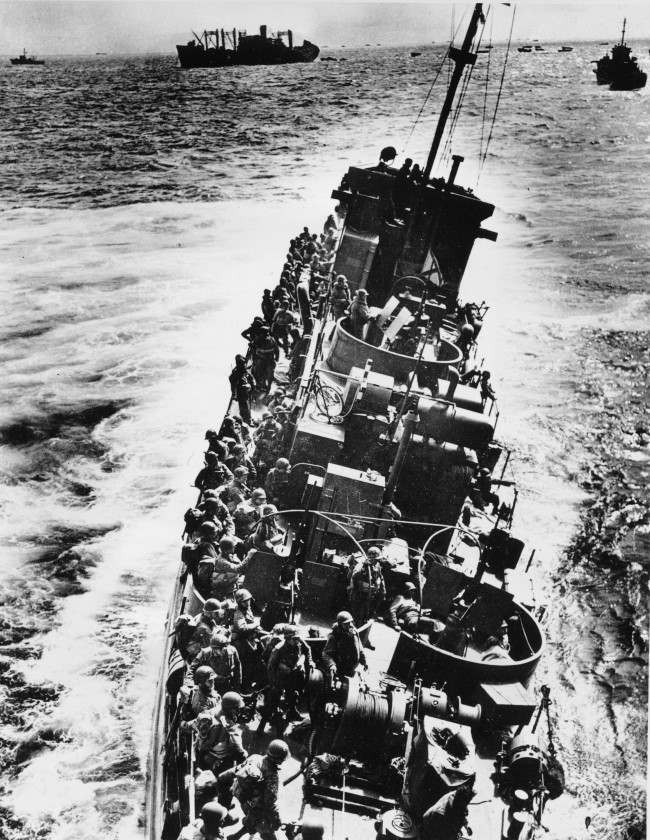
A U.S. Coast Guard LCI, heavily listing to port, moves alongside a transport ship to evacuate her troops, during the initial Normandy landing operations in France, on June 6, 1944. Moments later the craft will capsize and sink. Note that helmeted infantrymen, with full packs, are all standing to starboard side of the ship. (AP Photo)
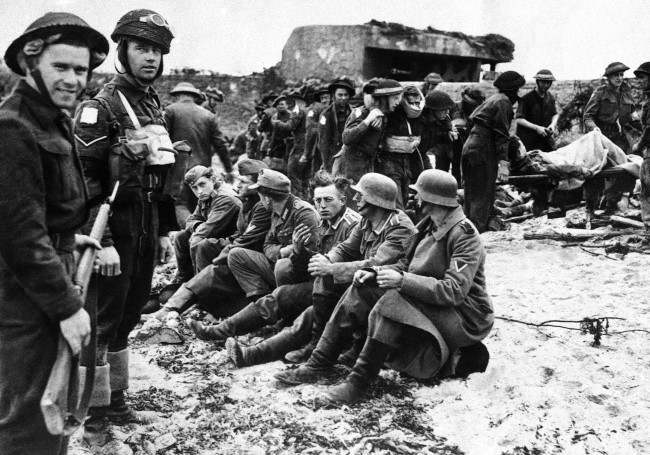
Canadian invasion troops stand guard over the first German prisoners captured during the assault on France by Allied forces on June 6, 1944 along a 100 mile front on the Normandy coast between LeHavre and Cherbourg. Wounded soldiers are being treated, in the background. At extreme bear are German coastal fortifications of masonry, silenced by the invaders. (AP Photo)
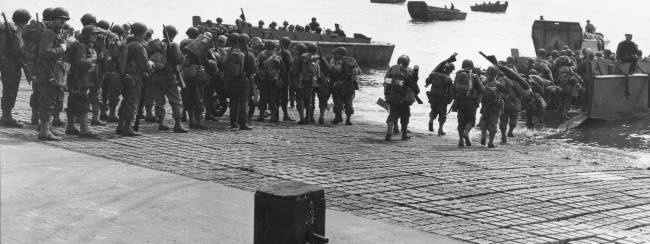
As the Allied invasion of the Normandy gets underway, American troops are shown as they embark in landing crafts at a British port, on June 6, 1944. (AP Photo/Peter Carroll)
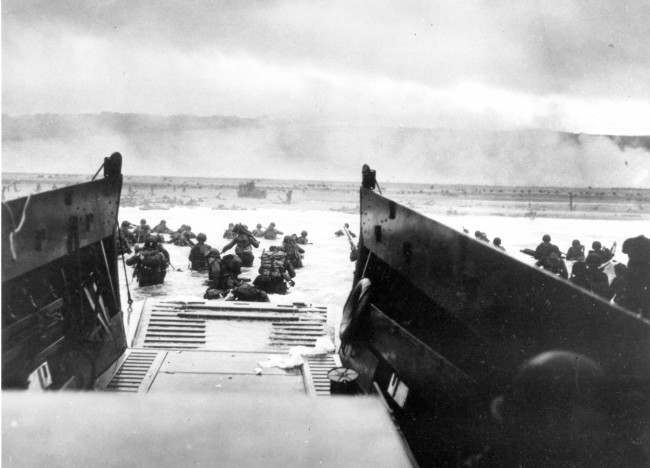
Under heavy German machine gun fire, American infantrymen wade ashore off the ramp of a Coast Guard landing craft on June 6, 1944, during the invasion of the French coast of Normandy in World War II.

British troops move on the Normandy shore from their landing craft on June 6, 1944 during the D-Day invasion of German occupied France during World War II. (AP Photo)
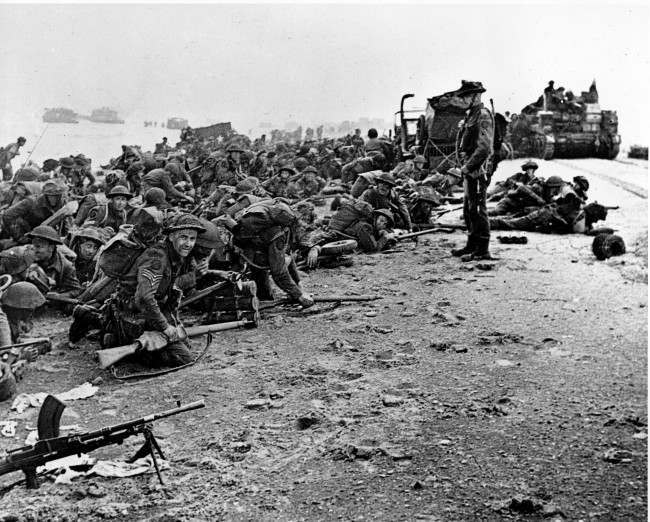
After landing at the shore, these British troops wait for the signal to move forward, during the initial Allied landing operations in Normandy, France, June 6, 1944. (AP Photo)
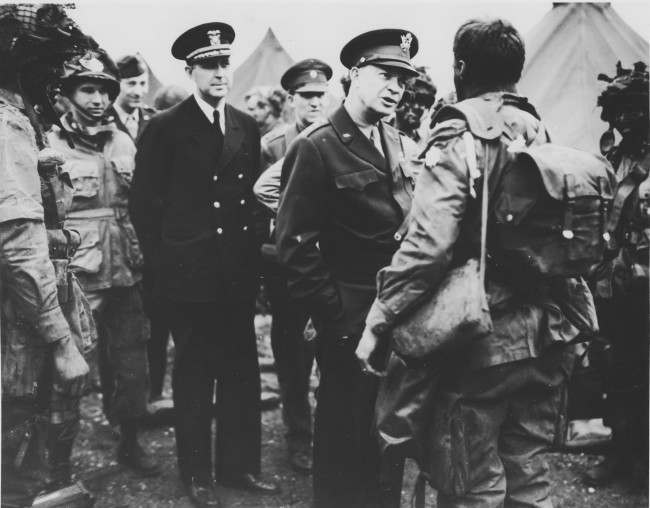
Supreme Commander Dwight Eisenhower visits paratroopers of the 101st Airborne Division at the Royal Air Force base in Greenham Common, England, three hours before the men board their planes to participate in the first assault wave of the invasion of the continent of Europe, June 5, 1944. (AP Photo)
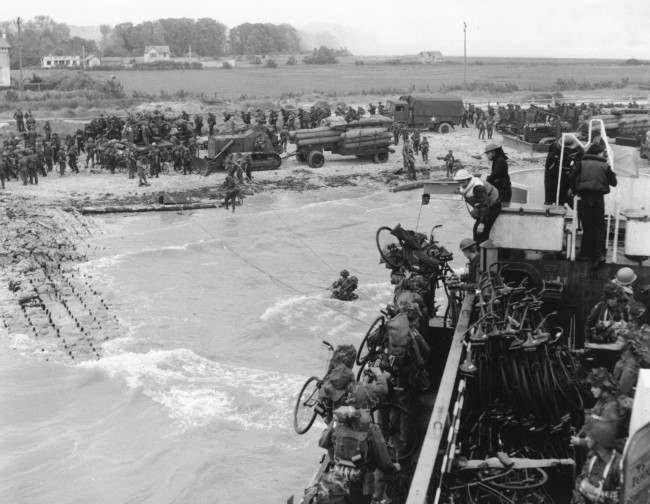
Soldiers of the 2nd Canadian Flotilla are seen as they establish a beachhead code-named Juno Beach, near Bernieres-sur-mer, on the northern coast of France, on June 6, 1944, during the Allied invasion of the Normandy. (AP Photo)
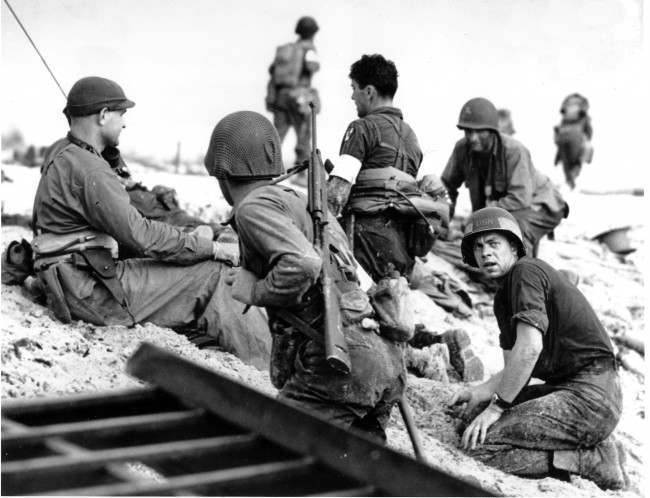
A first wave beach battalion Ducks lays low under the fire of Nazi guns on the beach of southern France on D-Day, June 6, 1944 during World War II. One invader operates a walkie talkie radio directing other landing craft to the safest spots for unloading their parties of fighting men. (AP Photo)
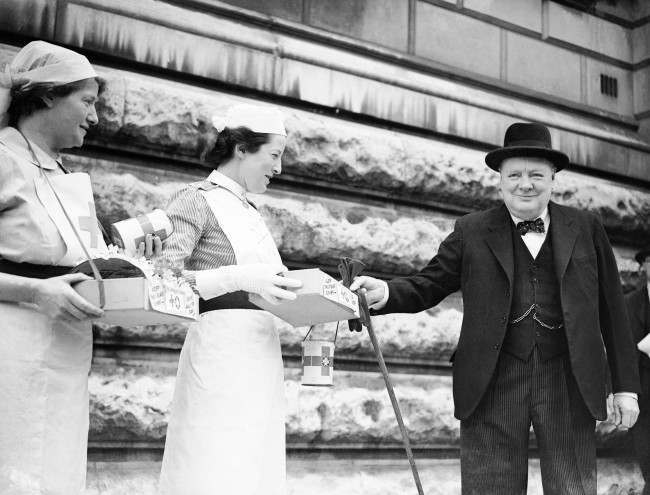
The Prime Minister, Winston Churchill, MP buying a Red Cross flag from a St. John’s Ambulance nurse standing next to a Red Cross Nurse on the day the allies launched their invasion of mainland Europe with ‘Operation Overlord’
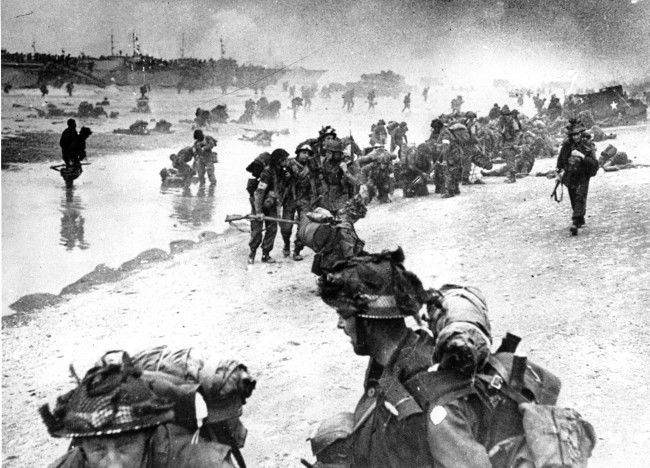
Wounded British troops from the South Lancashire and Middlesex regiments are being helped ashore at Sword Beach, June 6, 1944, during the D-Day invasion of German occupied France during World War II. (AP Photo)

American paratroopers, heavily armed, sit inside a military plane as they soar over the English Channel en route to the Normandy French coast for the Allied D-Day invasion of the German stronghold during World War II, June 6, 1944. (AP Photo)
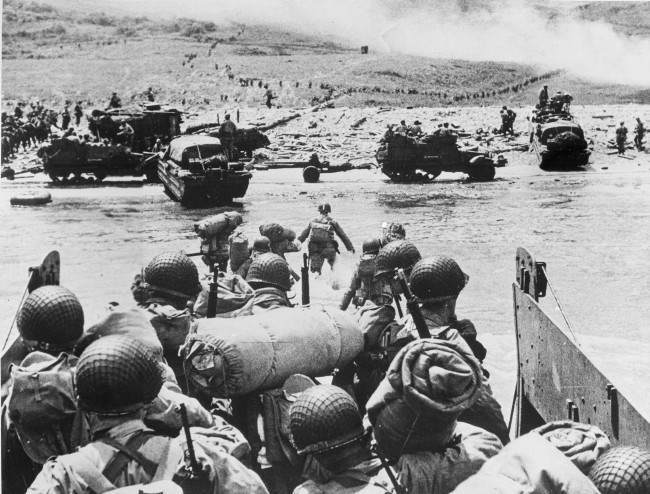
American soldiers and supplies arrive on the shore of the French coast of German-occupied Normandy during the Allied D-Day invasion on June 6, 1944 in World War II. (AP Photo)
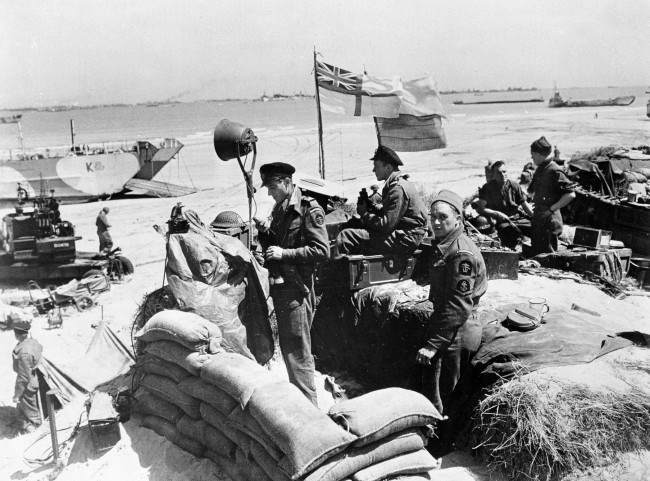
British troops make their way through low water and up the beach after leaving landing craft which transported them across the Channel to the Normandy beachhead for D-Day invasion in France, June 6, 1944 in World War II. (AP Photo/Official British photo)
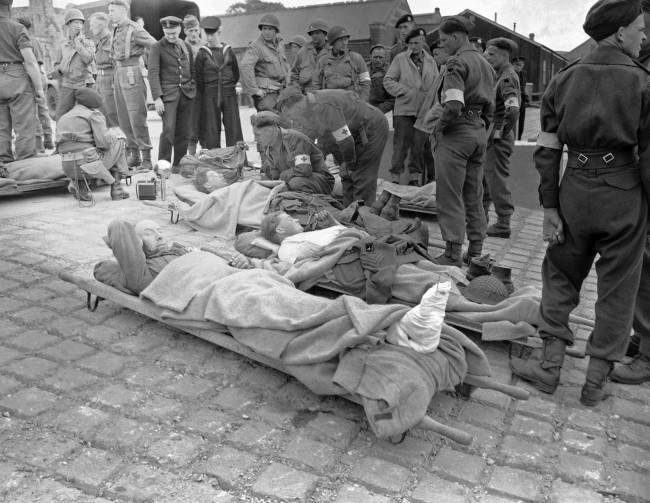
Some of the first British soldiers wounded in the French invasion coast fighting lie on stretchers somewhere in ÂBlighty  home in England  brought back the very day the assault started, June 6, 1944. Allied service men look with commiseration on their stricken comrades. (AP Photo/Harry Harris)
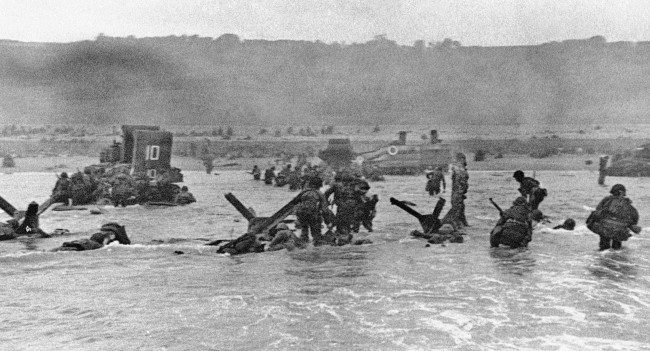
In this June 6, 1944 file picture, some of the first assault troops to hit the Normandy, France beachhead take cover behind enemy obstacles to fire on German forces as others follow the first tanks plunging through the water towards the German-held shore during World War II. (AP Photo)
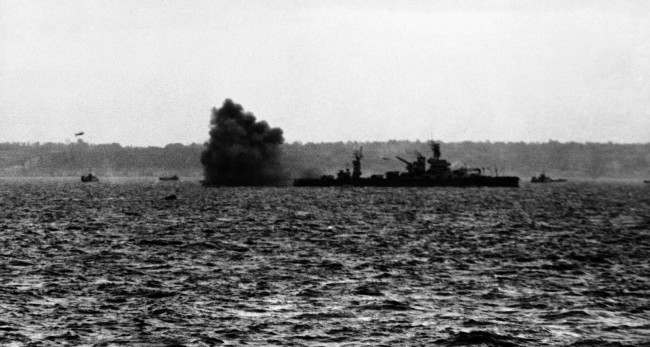
A puff of black smoke blows away from the guns of the USS Arkansas in June 1944 as the might battleship lays down a tremendous barrage against German installations on the beach area of France, in support to the Allied ground forces who stormed the Normandy beaches. (AP Photo)
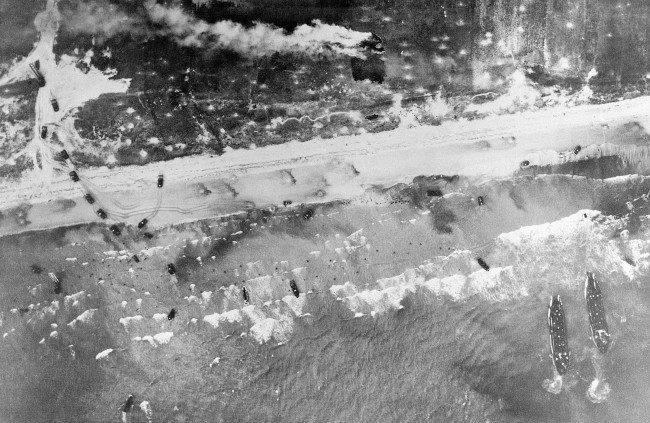
– In this June 6, 1944 file picture, Allied troops come ashore in the surf and vehicles start inland on the German-held beach of Normandy, France during World War II. (AP Photo)
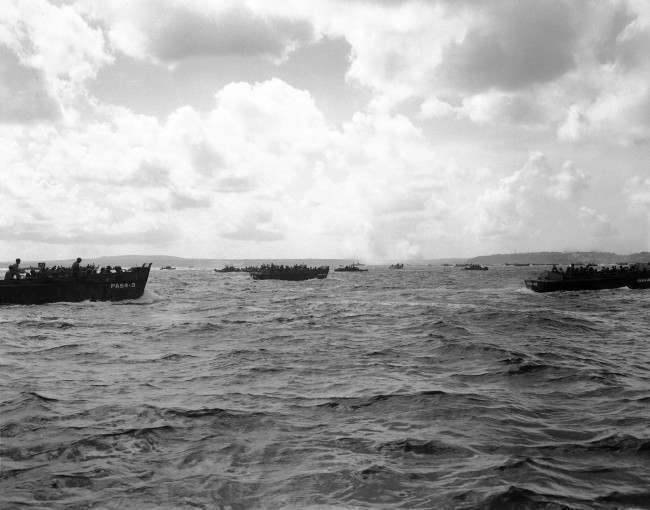
Smoke from Agana torpedo bomber targets are seen in the distance as landing craft race toward the Asan shore at Guam on D-Day, June 6, 1944. (AP Photo/Joe Rosenthal)
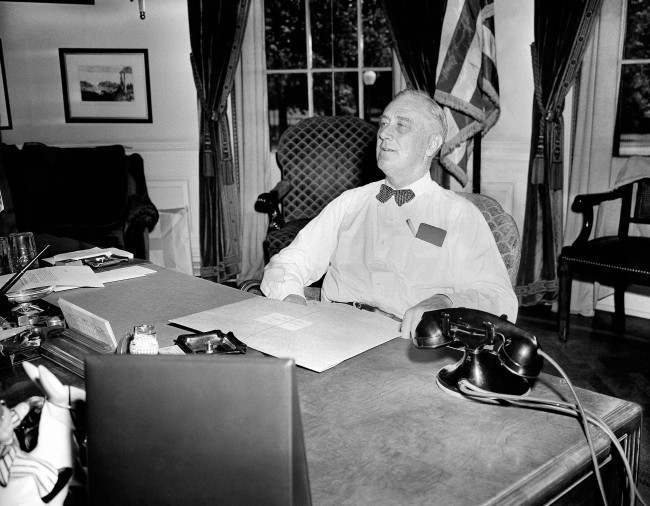
U.S. President Franklin D. Roosevelt wears an expression of confidence and determination as he receives visitors in his White House office on this long-awaited D-Day of the start of the western European invasion in Washington on June 6, 1944. (AP Photo)


An RAF pilot chalks up the score of his Hawker Typhoon Mk1B aircraft on the Squadron board.
After several months of operations against the Luftwaffe, the Typhoon proved one of the most formidable aircraft in Fighter Command. This aircraft carries Normandy invasion markings (white stripes).

Royal Marine commandos moving off the Normandy Beaches during the advance inland from “Sword” beach.

Royal Marine commandos moving off the Normandy Beaches during the advance inland from “Sword” beach.

Royal Marines from 48 Commando prepare to push out of the beachhead after landing close to the resort of St Aubin sur Mer. Undated picture.

Would you like to support Flashbak?
Please consider making a donation to our site. We don't want to rely on ads to bring you the best of visual culture. You can also support us by signing up to our Mailing List. And you can also follow us on Facebook, Instagram and Twitter. For great art and culture delivered to your door, visit our shop.









